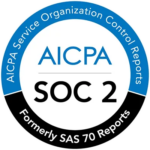There’s no arguing that challenges for shippers have multiplied and become convoluted. Supply chain issues during COVID-19 and the boom in e-commerce are perfect examples of the shipper’s sped-up world. That barrage of new impediments has meant shippers are turning to innovative supply chain solutions to try and keep up. So much so that the logistics software market is expected to reach $18.31 billion by 2030.
While newer software has benefitted shippers in some areas, it has neglected one crucial facet: freight claims. Like most other supply chain issues, freight claims are increasing. According to RetailDive, 21% of large packages arrive damaged. There’s more: “Each year within the U.S., there are approximately 37.5 million containers and trailers transporting goods through numerous interchange points on each trip. We estimate that 25% of those containers and trailers — or 9.4 million — are damaged,” said Tom Burke, CEO of TCompanies, the parent company of PEIRmobile. And more damages mean more freight claims and, if not documented correctly, more money out of the shippers’ pockets. How much money? Here’s an example: The company survey found that 61% of the companies that paid for damages said they did it because they couldn’t prove they weren’t responsible. The likely costs surpass $1.8 billion in the U.S. annually.
With almost that much money on the line, shippers need an ally in difficult times. Finding partners with efficient freight claims software, like the service offered by Freightclaims.com, is the ideal way to reduce those costs. So if freight claims technology is so important, why is it so hard to use?
Because it Relies on Multiple Software Interfaces
We’ve all heard the expression, “left hand not knowing what the right hand is doing.” In a way, the same can hold true for the freight claims technology many shippers use today. With non-industry-specific software, information is handled on different systems — for example, the documents might be managed on Word or PDF systems or in file folders, while data and deadlines are managed on Excel. Multiple platforms can leave shippers susceptible to oversights or details not being followed up on one of the platforms. The digital clutter can lead to forgotten or lost documents that can quash any chance of coming out on top in a claim.
Without a system that can alert the shipper when documentation is due, there can be slip-ups that mean costly missed deadlines. The Carmack Amendment gives shippers nine months to file loss or damage claims. “In the case of freight loss and damage claims, nine months seems an appropriate time limit for the shipper or receiver to ascertain that his goods have gone missing or been damaged in the course of movement,” according to a Journal of Commerce online article. “If you haven’t figured it out by that time, … it’s pretty arguable that the goods weren’t very important to you. So once that time has elapsed, you no longer can hold the carrier liable for the loss or damage unless you’ve filed your claim timely.” That kind of inattention to deadlines can be costly.
Because it’s an Afterthought, Rather than a Priority
Some freight claim-specific software isn’t always what it seems. It is often integrated into a larger visibility solution. Shippers are looking for integration, but freight claims are often not the primary focus of the software providers. That can lead to unwieldy systems that are inefficient and take up valuable time. And when you consider that the National Cargo Security Council (NCSC) estimates that the global financial impact of cargo loss exceeds $50 billion annually, that can also mean a lot of money going out the window. Shippers need to switch to partners that provide software with only freight claims in mind to keep that from happening.
Because Freight Claims Experts do not design it
When you say something looks “smart,” it’s probably because the people behind it are experts. That knowledge is needed to create a product that will answer every call. But with an ad-hoc assortment of software solutions or a logistics software program that tacked on a freight claims solution as an afterthought, you can be certain that a freight claims expert didn’t design those programs. This lack of knowledge and experience often leads to poor user experience. When you want a product that combines quality and efficiency, it’s important to turn to those who know all the facets of freight claims.
Find a Freight Claims Partner You Can Trust
Every business in the supply chain industry is looking for ways to save time, money, and grief. The aforementioned three reasons explained why freight claims cannot take a backseat in the world of shipping software and why a freight claims-focused platform can outperform any system that merely just incorporates freight claims. Suppose you want an expertly designed system with freight claims as its priority and can make information and resources easily accessible through a single cloud-based platform. In that case, it’s time to request a demonstration with Freightclaims.com today.


